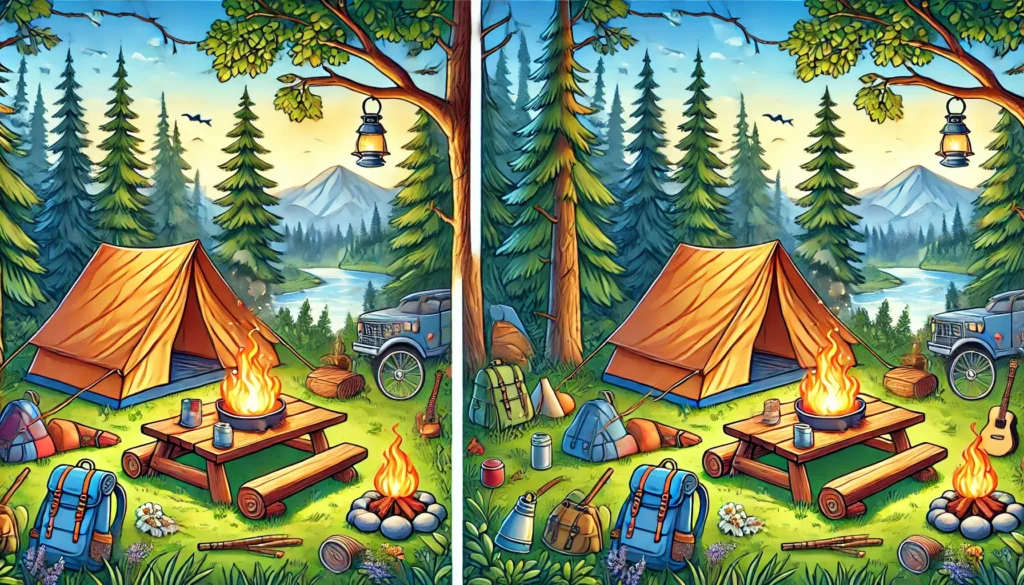Dry camping, also known as “boondocking” or “off-grid camping,” is an outdoor experience that allows campers to enjoy nature without the typical conveniences found in established campgrounds. Unlike traditional camping where water, electricity, and sewage hookups are readily available, dry camping means setting up camp in places with little to no amenities. It’s a self-reliant way of camping that offers freedom, tranquility, and a deeper connection to the outdoors.
Whether you’re an RV enthusiast, van lifer, or tent camper, dry camping can be an exciting challenge that lets you explore remote and less crowded areas. This guide will cover everything you need to know about dry camping, from the essentials to the best tips for making your off-grid adventure comfortable and enjoyable.
What is Dry Camping?
Dry camping is camping without the typical amenities of water, electrical, and sewage hookups. This style of camping is popular among those who want to explore remote areas or disconnect from crowded campgrounds, especially in deserts, national forests, and Bureau of Land Management (BLM) lands.
Dry Camping Locations include:
- National Parks and Forests
- BLM Land (Bureau of Land Management areas)
- State Parks
- Remote Private Property
Whether in a tent, van, or RV, dry camping is about self-sufficiency, so preparation and the right equipment are crucial.
Why Choose Dry Camping?
Dry camping offers several benefits that make it appealing to outdoor enthusiasts, particularly those looking for adventure and solitude.
Benefits of Dry Camping
Freedom and Flexibility: Dry camping allows you to camp in diverse locations without being limited to specific campsites.
Cost-Effective: Since many dry camping sites are free or have minimal fees, it’s a budget-friendly option.
Closer to Nature: Remote settings provide beautiful landscapes, wildlife encounters, and a quieter, more peaceful environment.
Off-Grid Living: For those wanting to try self-sufficiency, dry camping provides a rewarding experience in resource management and off-grid living skills.
Types of Dry Camping
There are a few different forms of dry camping, each with its own unique benefits and challenges.
1. Boondocking
Boondocking refers to dry camping on public lands, such as BLM lands or national forests, often at no cost. This type of camping is popular among RV and van travelers as it provides a remote, cost-effective camping option.
2. Dispersed Camping
Dispersed camping means camping outside of designated campsites, typically on public lands. It involves minimal amenities and often requires campers to follow specific guidelines, such as “leave no trace” practices.
3. Urban Dry Camping
This is dry camping in urban or suburban areas, like parking lots, often as a quick overnight solution for RV or van travelers.



Essentials for Dry Camping
Preparation is key when it comes to dry camping since you won’t have access to typical facilities. Here are some essential items to pack:
Water Supply
A sufficient supply of water is critical, as it will cover drinking, cooking, cleaning, and possibly even showering. Consider portable water containers or a water bladder for storage.
Power Source Many dry campers rely on solar panels or portable generators. Solar panels are environmentally friendly, while generators offer more consistent power, although they require fuel.
Waste Management Supplies Without sewage hookups, you’ll need a waste disposal solution, especially for RVs. A portable toilet, waste bags, or a composting toilet can be useful options.
Cooking Equipment A portable camping stove, propane grill, or solar oven allows for cooking without relying on electricity. Make sure to pack enough fuel if needed.
Lighting Battery-operated lanterns, headlamps, and solar lights are essential, especially in remote areas with no artificial lighting.
Box: Dry Camping Essentials Checklist
Water Containers
Solar Panels or Portable Generator
Portable Toilet or Composting Toilet
Portable Cooking Stove and Fuel
Battery-operated Lanterns and Headlamps
First Aid Kit and Emergency Supplies
Tips for a Comfortable Dry Camping Experience
Dry camping can be a learning experience, especially for beginners. Here are some tips to help you get started and make the experience as enjoyable as possible:
1. Conserve Water
Since you’ll have limited access to water, consider bringing water-saving supplies, such as biodegradable wipes, a solar shower, or a water filter for refilling from natural sources.
2. Monitor Your Power Usage
Power management is crucial for dry camping. Rely on solar energy as much as possible, and switch to battery-powered devices at night to conserve energy.
3. Plan Your Waste Disposal
“Leave no trace” is an essential principle for dry camping. Pack out all trash and have a plan for waste disposal, especially for RV and van campers.
4. Camp Responsibly
Dry camping often means camping on public land, so follow rules about campsite locations, fire safety, and respecting wildlife.
5. Pack Enough Supplies
Since you’ll be off the grid, make sure to bring all necessary supplies, including food, water, fuel, toiletries, and safety equipment.
Challenges of Dry Camping
While rewarding, dry camping does come with a few challenges that can be overcome with the right preparation and mindset:
Water Management: Managing a limited water supply is often one of the biggest challenges, especially for longer stays.
Waste Disposal: Without sewage hookups, handling waste responsibly can require extra effort.
Power Limitations: You’ll need to rely on alternative power sources like solar panels or generators, which might require adjustments to your usual power usage.
Top Destinations for Dry Camping in the U.S.
Dry camping spots can be found all over the U.S., particularly in national parks, forests, and BLM areas. Here are a few popular destinations:
Anza-Borrego Desert State Park, California
Offers vast, scenic desert landscapes and numerous dry camping spots across BLM land.
Boondocking in Arizona
Arizona has several boondocking sites, particularly around Quartzsite, Sedona, and Lake Havasu.
Big Bend National Park, Texas
Provides spectacular desert scenery and remote camping opportunities along the Rio Grande.
Bridger-Teton National Forest, Wyoming
Located near Yellowstone, this forest has some of the most scenic dispersed camping spots in the country.
Glen Canyon Recreation Area, Utah
With a unique landscape of red rock canyons and Lake Powell views, Glen Canyon is a great spot for adventurous dry campers.
Safety Tips for Dry Camping
When dry camping in remote areas, safety is paramount. Here are some key considerations:
Stay Updated on Weather Conditions: Weather can change quickly, especially in desert and mountainous regions. Plan accordingly and pack gear for unexpected weather.
Communication and Navigation: Remote areas may lack cell service. Bring a GPS device, satellite communicator, or detailed maps.
Wildlife Safety: Be aware of local wildlife and secure food to avoid attracting animals to your campsite.
Emergency Preparedness: A well-stocked first aid kit and knowledge of the nearest emergency services can make a big difference in case of an incident.
Conclusion: Discover Freedom with Dry Camping
Dry camping is a unique and rewarding experience that allows campers to fully immerse themselves in nature, free from the trappings of modern amenities. It offers unparalleled freedom, the chance to explore remote areas, and a challenge that tests your self-sufficiency and preparedness. With the right planning, gear, and mindset, dry camping can be an incredibly enriching way to connect with the natural world.
Ready to give dry camping a try? Prepare well, embrace the experience, and enjoy the thrill of living off the grid, where nature becomes both your playground and your home.

